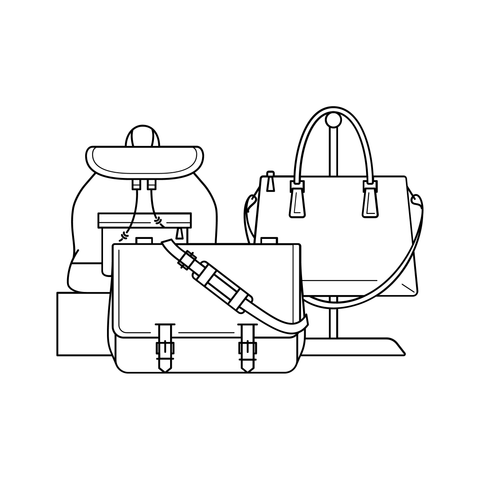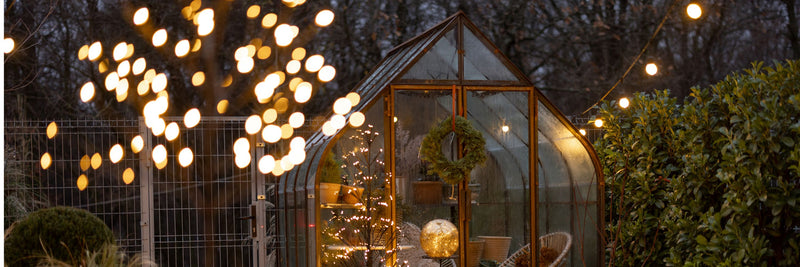January might be one of the coldest and quietest months in the gardening calendar, but there’s still plenty to do to ensure your garden is ready for the growing season. While frosty mornings and shorter days might deter you from heading outdoors, tackling a few essential gardening tasks now will give your plants, lawn, and garden structures a head start.
Protect Plants from Frost and Cold
January often brings frosty nights and chilly winds, so protecting your plants is essential to prevent frost damage. Move tender plants into greenhouses or indoors where possible. For outdoor plants, use fleece, cloches, or mulch to protect roots and vulnerable shoots from the cold.
Check that pots and containers are raised off the ground to improve drainage and prevent waterlogging, which can cause root rot in freezing temperatures.

Plan Your Garden for the Year
January is a great time to reflect on last year’s successes and plan for the coming season. Create a planting schedule for vegetables, flowers, and herbs based on your local climate and frost dates and order seeds early to ensure you get your preferred varieties.
If you’re considering a garden makeover, start sketching out new layouts or researching plants that will thrive in your space.

Prune Trees, Shrubs, and Hedges
Winter is the ideal time to prune many deciduous trees and shrubs while they are dormant. Use your Eversharp Secateurs to cut back Wisteria to two or three buds to encourage flowering later in the year.
Use some good loppers to prune fruit trees such as apples and appears to shape them and promote healthy growth. Avoid pruning stone fruit trees like cherries and plums until summer to prevent disease.
Tidy up hedges and overgrown shrubs with hedge shears to maintain their shape and encourage new growth in spring.

Start Early Seed Sowing
For those eager to get a head start on the growing season, January is the time to sow seeds indoors. Use a dibber to sow hardy vegetables such as broad beans, onions, and leeks in trays or pots indoors or in a heated greenhouse.
Start sweet peas indoors for an early summer display and ensure seedlings receive adequate light by placing them near a sunny window or using grow lights to encourage strong growth. Find out more about seeds to sow in January.

Care for Your Lawn
Although grass growth is minimal in winter, your lawn still needs attention. Keep off the grass as much as possible to avoid compacting the soil when it’s wet or frozen.
Using a wide head rake, clear leaves and debris to allow light and air to reach the grass, reducing the risk of disease and moss growth. If waterlogging is a problem, consider aerating the lawn in early spring to improve drainage.

Houseplant Care
In January, houseplant care requires extra attention as the colder, darker days can impact their health. Most houseplants enter a slower growth phase during winter, so reduce watering to prevent over-saturation, but continue to water plants like poinsettias and Christmas cacti when the soil feels dry.
Maximise available light by moving plants closer to windows or brighter spots, but avoid placing them in direct sunlight that could scorch delicate leaves. Keep plants away from draughts and temperature fluctuations caused by radiators or open windows. Clean dusty leaves on plants like fiddle-leaf figs or snake plants to help them photosynthesize effectively. Finally, inspect plants regularly for signs of pests such as aphids or mealybugs and treat them promptly to prevent infestations.

Clean and Maintain Garden Tools
January is the perfect time to give your gardening tools some TLC. Clean, sharpen, and oil tools to keep them in good condition for the busy months ahead. Check for any damaged tools and replace or repair them.
You can also spend this time organising your garden shed to ensure everything is easily accessible when spring arrives.
Read our guide on how to care for your garden tools.

Feed and Care for Wildlife
Winter can be tough on garden wildlife, so take steps to support birds, insects, and other creatures. Keep bird feeders topped up with high energy foods like suet balls and provide fresh water in bird baths, making sure to break the ice on frosty mornings. Leave an untidy corner of your garden with logs or leaves for insects and small mammals seeking shelter.

Check Garden Structures
Frost, wind, and rain can take a toll on garden structures, so inspect and repair them as needed. Check fences, gates, and trellises for signs of damage and make any necessary repairs. It is also wise to ensure greenhouses and cold frames are clean and secure, with no broken glass or loose panels. Clean patios and paths to prevent slippery algae from forming, making them safer to walk on during wet weather.

Composting and Soil Care
Even in winter, your compost heap and soil need attention. Use a garden fork to turn your compost heap to aerate it and speed up decomposition. You can add kitchen scraps and garden waste to keep the composting process going and also consider adding a layer of organic matter such as well-rotted manure or compost to flower beds and vegetable plots. This will help to improve soil fertility for the coming season.










